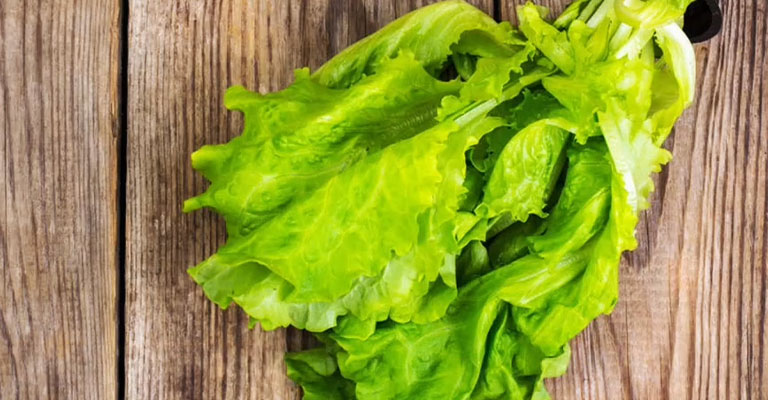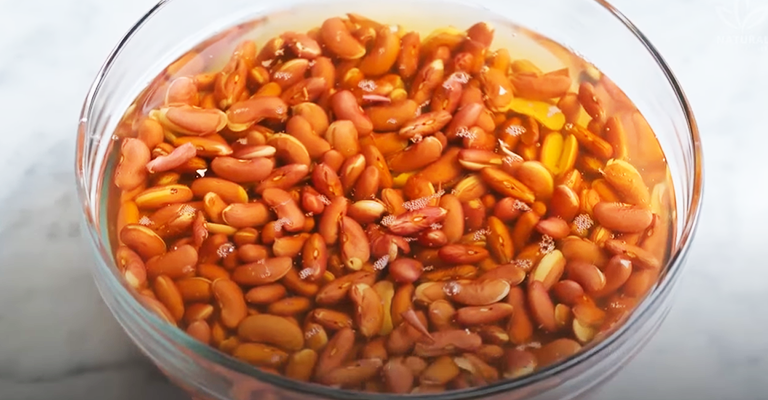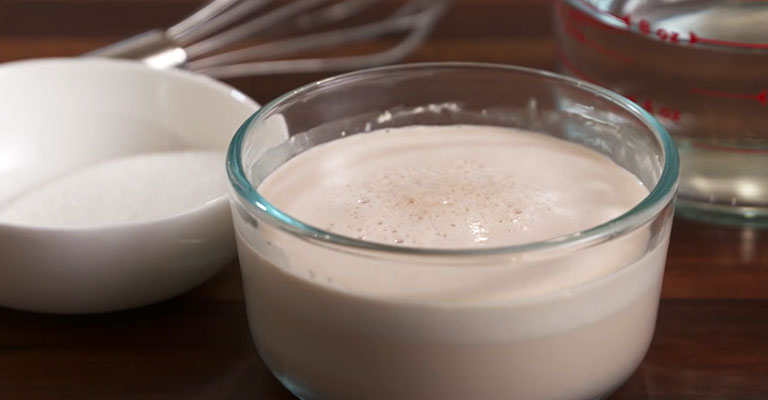Why Is My Romaine Lettuce Bitter?-Explore the Actual Reasons
Romaine lettuce, renowned for its crisp texture and mild flavor, can occasionally present an unwelcome surprise: bitterness. This phenomenon can perplex gardeners and home cooks alike.
Understanding the underlying reasons behind this bitter taste is essential for cultivating and preparing a delectable salad green. Factors ranging from the plant’s natural life cycle to environmental influences and post-harvest handling play a pivotal role.
Delving into these aspects sheds light on how to cultivate and store romaine lettuce to maximize its delightful, non-bitter qualities.
Unraveling the mystery of bitter romaine lettuce ensures a more enjoyable culinary experience for all who appreciate this versatile leafy green.

What Is Romaine Lettuce?
Romaine lettuce, scientifically known as Lactuca sativa var. longifolia, is a popular leafy green vegetable widely recognized for its crisp texture and slightly bitter flavor.
Belonging to the Asteraceae family, it is a cultivar of the wild lettuce species Lactuca sativa, which has been cultivated for thousands of years. Originating in the Mediterranean region, romaine lettuce is believed to have been cultivated by the ancient Egyptians.
Its name is derived from the Roman Empire, where it gained popularity. This lettuce variety forms tight, elongated heads of sturdy leaves, distinct from loose-leaf varieties.
It’s a rich source of vitamins A, K, and folate, making it a nutritious addition to salads and various culinary dishes.
Romaine lettuce remains a staple in modern cuisine due to its delightful crunch and versatility in a range of culinary applications.
Why Is My Romaine Lettuce Bitter?
Romaine lettuce, with its crisp texture and slightly bitter flavor, is a popular leafy green in salads and other culinary dishes. However, when it turns excessively bitter, it can be quite unappetizing.
There are several factors that can contribute to the bitterness of romaine lettuce:
Maturity of the Plant
As romaine lettuce progresses through its growth cycle, the flavor profile undergoes a transformation. Young leaves plucked early in the plant’s life, offer a milder taste compared to older, more mature leaves.
As the lettuce matures, its energy shifts towards reproduction, leading to an increase in bitter compounds. Therefore, selecting younger leaves for consumption can result in a less bitter and more palatable experience.
Growing Conditions
The environment in which romaine lettuce is cultivated holds significant sway over its flavor. Variables like temperature, soil composition, and water availability all leave their imprint on the taste.
Instances of stress due to erratic watering schedules, or exposure to extreme temperatures, can elevate bitterness levels. Thus, ensuring consistent and optimal growing conditions is pivotal in attaining a balanced, enjoyable flavor.
Exposure to Sunlight
Excessive exposure to direct sunlight can prompt romaine lettuce to deploy its natural defense mechanisms, resulting in increased bitterness. This response arises from the plant’s attempt to shield itself from potential harm.
Hence, providing adequate shade or regulating sunlight exposure can mitigate the bitterness, yielding a more agreeable taste.
Harvesting Time
Timing is crucial when it comes to harvesting romaine lettuce. Leaving it in the ground for an extended period can lead to over-maturation and heightened bitterness.
Ideally, harvesting the leaves while they are still young and tender ensures a more delicate and less bitter flavor profile.
Culinary Practices
The method of preparation and cooking plays a pivotal role in the overall taste of romaine lettuce. Overcooking or subjecting it to high temperatures can intensify its bitterness.
Conversely, employing techniques like blanching or braising can help temper the bitterness, rendering a more balanced and enjoyable culinary experience.
Genetic Variability
Different varieties of romaine lettuce exhibit varying levels of bitterness. Some cultivars are naturally more robust in flavor, while others tend to be milder.
Choosing a variety that aligns with personal taste preferences can significantly influence the overall enjoyment of the lettuce.
Storage Conditions
After harvesting, the storage environment is critical in maintaining the desired flavor. Romaine lettuce should be kept in a cool, humid setting, preferably in a perforated plastic bag within the crisper drawer of the refrigerator.
When exposed to fluctuating temperatures or air, the lettuce can turn bitter. Proper storage ensures that the lettuce retains its freshness and flavor.
Inconsistent Watering
Even watering is essential for healthy romaine lettuce. Inconsistent watering patterns can stress the plant, triggering the production of bitter compounds.
Therefore, a regular and well-regulated watering schedule is paramount for achieving a more balanced and less bitter taste.
Nutrient Levels
The nutrient content of the soil can significantly impact the flavor of romaine lettuce. Imbalances, particularly an excess of nitrogen, can lead to heightened bitterness.
Maintaining a well-balanced soil nutrient profile is essential for cultivating lettuce with a desirable flavor.
Pest Damage
In the face of pest infestations, romaine lettuce may release defensive chemicals, contributing to its bitterness.
Vigilant pest management practices can help mitigate this issue, resulting in a more enjoyable eating experience.
How to Prevent Bitterness in Romaine Lettuce?

Preventing bitterness in romaine lettuce involves a combination of attentive cultivation practices and post-harvest care.
Here’s a comprehensive guide:
Selecting the Right Variety
When choosing romaine lettuce seeds or transplants, opt for varieties known for their mild or sweet flavor. Varieties with names like “Butterhead” or “Sweet Gem” often indicate a milder taste.
Reading seed descriptions or consulting with local nurseries can help you identify suitable options.
Optimal Growing Conditions
Ensure that the soil is well-draining and rich in organic matter. Conduct soil tests to maintain a balanced nutrient profile, avoiding excessive nitrogen levels which can lead to bitterness.
Regularly amend the soil with compost or well-rotted manure to provide essential nutrients.
Monitor Sun Exposure
Strike a balance between sunlight and shade. Consider planting romaine lettuce where it receives morning sunlight and partial afternoon shade.
When growing in containers, move them to a slightly shadier spot during peak afternoon sun hours to prevent overheating.
Harvest at the Right Time
Timing is crucial. Harvest romaine lettuce while the leaves are young, crisp, and vibrant in color.
Avoid waiting until the leaves become overly mature and start to elongate, as this is a common cause of increased bitterness.
Adequate Watering
Establish a consistent watering schedule. Aim for even moisture levels in the soil, ensuring it doesn’t become overly dry or waterlogged.
Drip irrigation or soaker hoses can be effective in delivering a steady, controlled water supply.
Pest Management
Regularly inspect the plants for signs of pests such as aphids, caterpillars, or slugs. Implement organic pest control methods like handpicking, neem oil, or insecticidal soap to manage infestations.
Timely intervention prevents the release of bitter compounds.
Mulching
Apply a layer of organic mulch, such as straw or shredded leaves, around the base of the romaine lettuce plants.
Mulch helps regulate soil moisture, and temperature, and suppresses weed growth, reducing stress and potential bitterness.
Proper Spacing
Follow recommended spacing guidelines for romaine lettuce.
Adequate spacing ensures good air circulation between plants, reducing the risk of overcrowding-induced stress, which can lead to increased bitterness.
Monitor Soil pH
Regularly check and adjust soil pH levels to maintain an optimal range between 6.0 and 7.0 for lettuce. pH levels outside of this range can affect nutrient availability and potentially lead to bitterness.
Post-Harvest Handling
After harvesting, promptly cool the lettuce to slow down metabolic processes. Store it in a cool, humid environment to maintain crispness and flavor.
Utilize perforated plastic bags or containers to control moisture levels without causing excessive condensation, which can lead to rot.
Crop Rotation
Avoid planting romaine lettuce in the same spot in consecutive growing seasons.
Rotate crops to prevent soil-borne diseases and nutrient imbalances that can contribute to bitterness. This practice also helps maintain overall soil health.
Use Protective Measures
Consider employing row covers or insect nets to shield the plants from pests and harsh environmental conditions. These protective measures can reduce stress on the plants and contribute to a milder flavor.
Varieties of Romaine Lettuce
Romaine lettuce, known for its crisp leaves and mild, slightly sweet flavor, comes in various cultivars. Each variety offers unique characteristics, making them suitable for different culinary applications.
Here are some notable varieties:
Crisphead (Iceberg)
Iceberg lettuce, though not technically a romaine, is often grouped with romaine due to its similar appearance. It is characterized by tightly packed, crisp leaves that form a dense head.
Iceberg lettuce is known for its mild, watery flavor and crunchy texture, making it a popular choice for salads and sandwiches, especially in classic recipes like the “wedge salad.”
Parris Island Cos
Parris Island Cos is a classic romaine variety, cherished for its elongated heads and upright growth habit. Its leaves are long, slender, and tightly packed, offering a satisfying crunch.
The flavor profile is characterized by a delicate sweetness with a subtle nutty undertone. This makes Parris Island Cos an excellent choice for traditional Caesar salads and sandwiches.
Little Gem
Little Gem lettuce is a smaller, more compact version of the traditional romaine. It forms tight, mini heads with tender, sweet leaves.
The texture is notably crisp, and the flavor is pleasantly mild. This variety is perfect for individual salads or as a delightful accompaniment to appetizers and light dishes.
Jericho
Jericho is prized for its ability to thrive in warm climates, making it an excellent choice for regions with hot summers.
It features crisp, upright leaves with a refreshing, clean flavor. The texture is notably crunchy, making Jericho a versatile choice for various salads and wraps.
Valmaine
Valmaine is a French romaine variety known for its dense, deep green heads. The leaves are characterized by their robust texture and rich, earthy flavor.
This variety pairs exceptionally well with a range of dressings, from creamy to vinaigrette, making it a versatile option for salads with diverse flavor profiles.
Cimmaron
With its striking burgundy-red leaves, Cimmaron adds a visually appealing touch to salads. The flavor profile boasts a slightly bitter edge, which introduces a layer of complexity to mixed greens.
This variety is favored for its unique appearance and ability to elevate the visual appeal of dishes.
Outredgeous
Outredgeous is a red romaine lettuce variety known for its vibrant color and mildly sweet taste. The leaves are tender and crisp, providing a delightful textural contrast.
Its striking appearance makes it a popular choice for salads where visual impact is desired, and the subtly sweet flavor complements a variety of ingredients.
Rouge d’Hiver
Originating from France, Rouge d’Hiver features reddish outer leaves that contrast with a creamy, pale heart.
The flavor profile is balanced, offering a subtle nuttiness that complements a wide range of salad ingredients. Its unique appearance and nuanced taste make it a favored choice among culinary enthusiasts.
Growing and Storage Tips for Avoiding Bitterness
To avoid bitterness in romaine lettuce and ensure that it retains its crisp, mild flavor, it’s essential to pay attention to both growing and storage practices. Here are some valuable tips for both stages:
Growing Tips
Choose the Right Variety
Selecting a romaine lettuce variety that aligns with your taste preferences is crucial.
Some varieties are naturally milder in flavor, making them less likely to develop bitterness as they mature.
Optimal Growing Conditions
Ensuring that the soil is well-draining and enriched with organic matter provides a hospitable environment for romaine lettuce to thrive.
Balancing nutrient levels, particularly avoiding excess nitrogen, helps prevent the development of bitterness.
Sun Exposure
Striking the right balance between sunlight and shade is essential.
Morning sun exposure allows the plant to photosynthesize efficiently, while partial afternoon shade protects it from excessive heat, which can lead to stress-induced bitterness.
Harvest at the Right Time
Timing is crucial when it comes to harvesting romaine lettuce. Young leaves are generally milder in flavor.
Harvesting before the leaves become overly mature ensures a more delicate and less bitter taste.
Adequate Watering
Establishing a consistent watering schedule is essential for romaine lettuce.
Even moisture levels in the soil prevent drought stress, which can lead to bitterness. However, it’s equally important to avoid waterlogging, as this can also cause stress.
Pest Management
Vigilance in monitoring the plants for signs of pests and implementing organic pest control methods prevent stress-induced bitterness. Pests can trigger the release of bitter compounds as a defense mechanism.
Mulching
The application of organic mulch around the base of the plants helps regulate soil moisture and temperature.
This reduces stress on the plants, which in turn minimizes the likelihood of bitterness.
Proper Spacing
Following recommended spacing guidelines ensures that air circulates freely between the plants.
Overcrowding can lead to increased competition for nutrients and moisture, potentially resulting in stress-induced bitterness.
Soil pH
Maintaining the correct soil pH level (between 6.0 and 7.0) ensures that essential nutrients are readily available to the plants.
This balanced pH range supports healthy growth and reduces the risk of bitterness.
Crop Rotation
Avoiding consecutive plantings of romaine lettuce in the same spot helps prevent soil-borne diseases and nutrient imbalances that can contribute to bitterness. Crop rotation promotes overall soil health.
Protective Measures
Employing protective measures like row covers or insect nets shields the plants from pests and harsh environmental conditions. This reduces stress on the plants, contributing to a milder flavor.
Storage Tips
Cooling and Humidity
After harvesting, rapidly cooling the lettuce helps maintain its freshness. Storing it in a cool, humid environment slows down metabolic processes, preserving the crispness and flavor.
Use Perforated Bags or Containers
Perforated plastic bags or containers allow for controlled moisture levels.
This prevents excessive condensation, which can lead to rot. Proper ventilation is crucial for extending the shelf life of romaine lettuce.
Refrigeration
Storing romaine lettuce in the crisper drawer of the refrigerator, where temperatures range between 32°F and 40°F (0°C and 4°C), provides an optimal storage environment. This helps retain the lettuce’s freshness and flavor.
Avoid Freezing
Freezing romaine lettuce can lead to cell damage, negatively affecting its texture and flavor. It’s important to avoid subjecting the lettuce to freezing temperatures.
FAQs
Why does my romaine lettuce taste bitter?
Romaine lettuce can turn bitter due to factors like maturity, environmental conditions, and irregular watering.
Can I do anything to prevent romaine lettuce from turning bitter?
Yes, you can take several measures. Harvesting young leaves, providing consistent watering, avoiding excessive sunlight, and choosing appropriate varieties are all steps that can help prevent bitterness.
How can I tell if my romaine lettuce is too mature and likely to be bitter?
Overly mature romaine lettuce tends to have elongated leaves with a tougher texture.
Does the variety of romaine lettuce affect its bitterness?
Yes, different varieties have varying levels of bitterness. Some cultivars are naturally milder, while others may be more prone to bitterness as they mature.
Can storage conditions impact the bitterness of romaine lettuce?
Yes, improper storage can contribute to bitterness. Romaine lettuce should be stored in a cool, humid environment.
To Recap
The bitterness of romaine lettuce is influenced by a combination of factors. From the plant’s natural maturation process to environmental conditions and culinary practices, each element plays a role in shaping its flavor.
Harvesting at the right time, providing consistent watering, and selecting appropriate varieties are essential steps in preventing bitterness.
Additionally, understanding the impact of sunlight, soil quality, and storage conditions is crucial for maintaining the lettuce’s crisp, mild taste.
By implementing these practices, one can enjoy romaine lettuce at its best, ensuring a delightful addition to salads and dishes, free from unwanted bitterness. With careful attention, a more pleasurable culinary experience with romaine lettuce is easily attainable.


